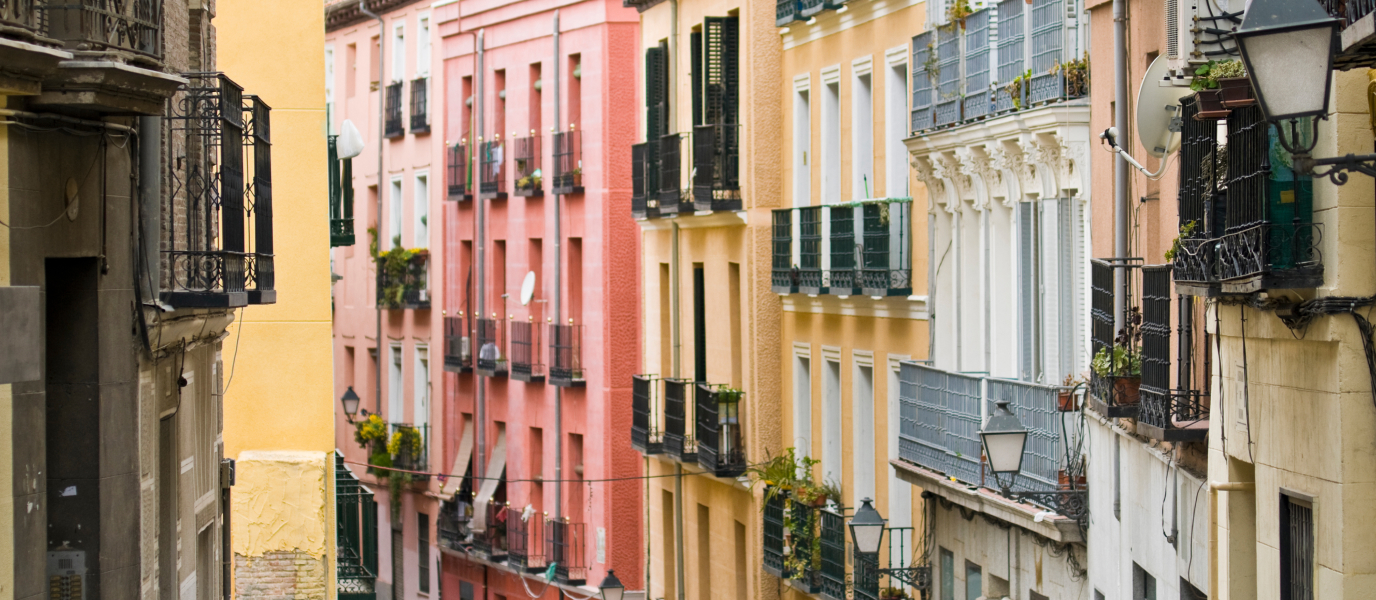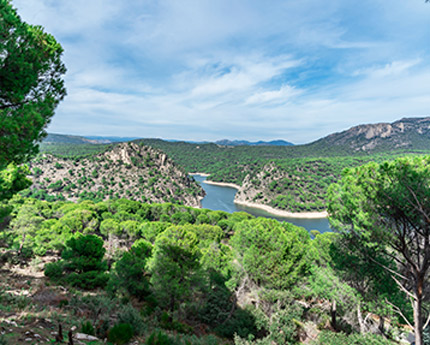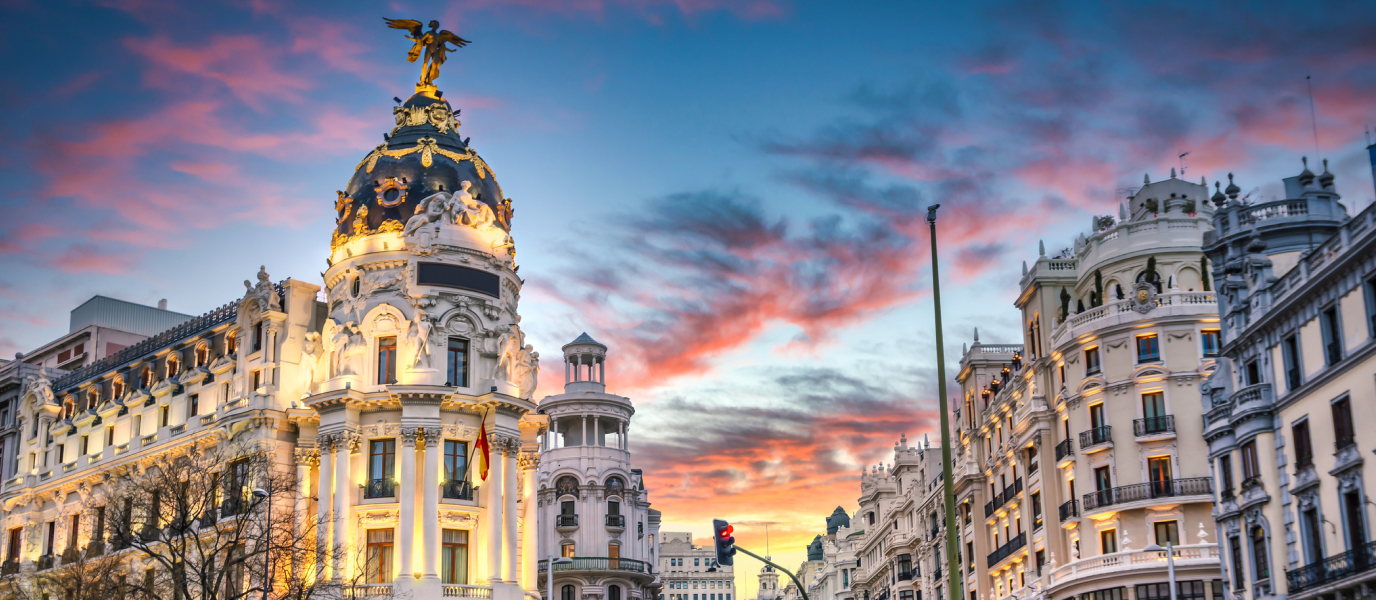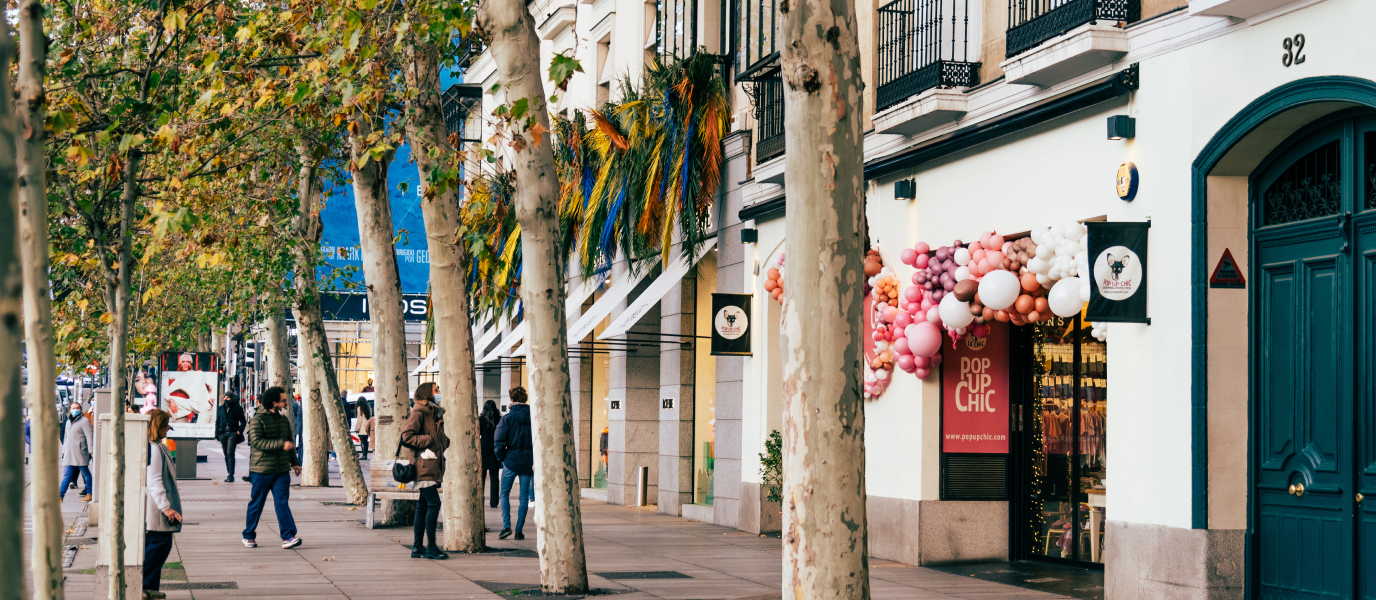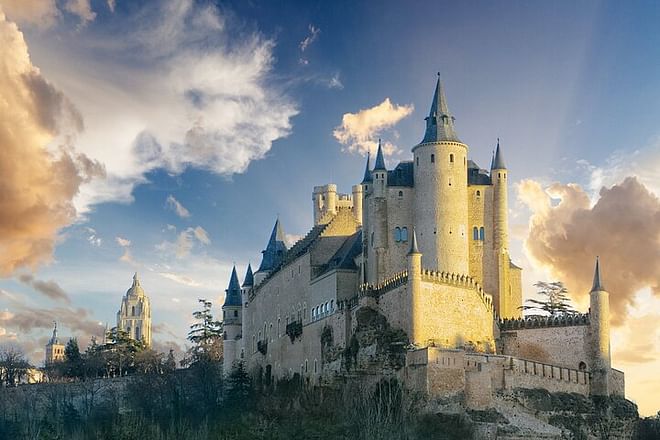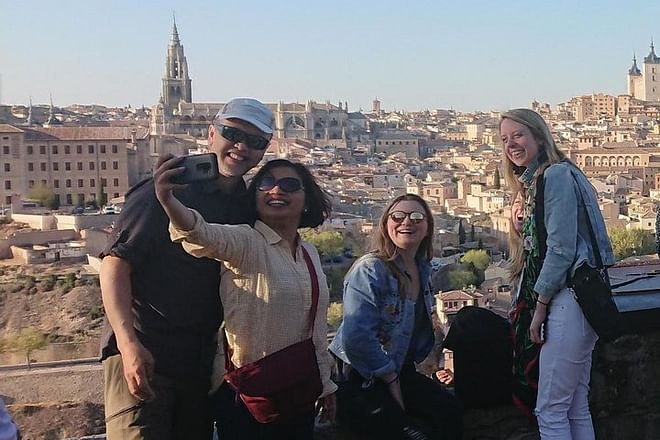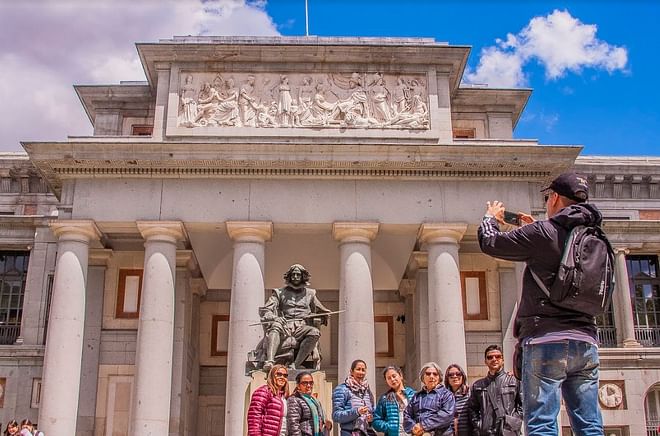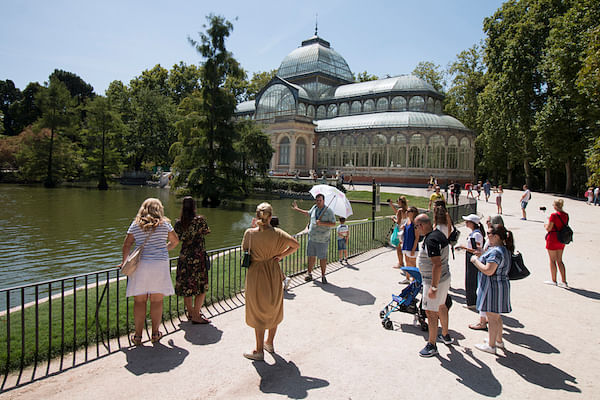Located to the south-east of the city centre, the neighbourhood of Lavapiés conceals within its steep streets and former corralas [building with several storeys of flats built around a central courtyard] a buzzing, exotic world. This unique neighbourhood, with its five-hundred-year history, is distinguished by its fusion of multiculturalism and pure-blooded identity. Its residents are still known as Manolos and Manolas, a tradition which, according to popular legend, was the name chosen in the fifteenth century by Jews who decided to convert to Christianity when the Catholic Monarchs ordered their expulsion. Lavapiés still retains a medieval feel, having originally been a ghetto that grew up outside the city walls when Madrid became the capital of the kingdom in 1561. In modern times, Lavapiés continued as a working-class neighbourhood, becoming home to agricultural workers who abandoned the countryside as a result of forced industrialisation. In the late twentieth century, this migratory phenomenon would be repeated, but this time the immigrants were Ecuadorians, Colombians, Moroccans, Africans, Chinese and Bangladeshis. Thus, a microcosm made up of 88 different nationalities emerged in Lavapiés, a phenomenon not seen in the rest of Spain. This ethnically diverse neighbourhood now nurtures a wealth of exotic cuisines, religious temples of various kinds, self-managing associations, art galleries, theatres, etc. All this just a stone’s throw from the centre of the city.
Lavapiés, home to 88 nationalities
In former times, Lavapiés used to be described as the barrio de la manolería [neighbourhood inhabited by Manolos], a traditional community consisting of washerwomen, cigar sellers, tradesmen and workmen, depicted accurately and wittily by the comic operas of the eighteenth-century playwright Don Ramón de la Cruz. Today’s picture is somewhat different. Of the 45,000 official residents, a third are foreigners, and their geographical distribution is reminiscent of the medieval guild system: the African residents live in Calle Lavapiés, the Chinese in Tirso de Molina and Magdalena, the Bangladeshis in and around Calle Amparo, etc. In addition, another kind of profile has become evident over recent years. Drawn by the neighbourhood’s central location and its magnetic ambience, professional young hipsters with a cosmopolitan outlook and diverse ethnicities have come to see Lavapiés as a practical place to live. Therefore, in addition to the main nationalities, it is also possible to find Italians, North Americans, Australians and British people.
Art and culture in the heart of Lavapiés
One thing is certain: every corner of Lavapiés is steeped in art. Its walls and business establishments plastered with creative graffiti help to embellish an enclave teeming with cultural venues. We are referring to art galleries such as those in Calle Dr Fourquet, and well-known theatres including the Teatro Valle Inclán and the Teatro Pavón (Kamikaze). The area also retains former picture houses like Cine Doré and Sala Equis, as well as bookshops specialising in urban art, such as Swinton & Grant. Furthermore, although some may not realise it, one of the world’s most prestigious museums of modern art, the Museo Reino Sofía, is officially in Lavapiés. Last but not least, there is La Casa Encendida [Burning House], a social and cultural centre established in 2002, which hosts all kinds of arts-related events and activities, mostly with free admission.
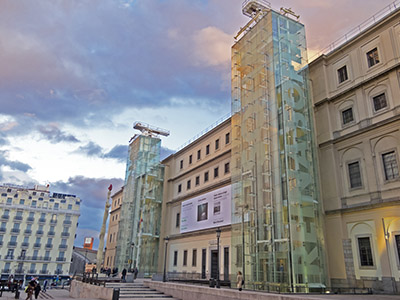
What to eat in Lavapiés: An international menu like no other
For many people, the cuisine available on the streets of Lavapiés is enough to make it worth a visit—and for good reason. The overwhelming range of international restaurants contrasts with the unpretentious, everyday establishments, producing an area that can accommodate almost any preference. Just as an example, you could find anything from a succulent thiebou dyenn—rice with spiced fish—at the “Dakar” Senegalese restaurant (Calle del Amparo, 61), to an authentic chicken tagine at the La Alhambra Moroccan restaurant (Calle del Tribulete, 4). And if that’s not enough, there’s still more. While Nap (Calle del Ave María, 19), offers entirely artisan-made Neapolitan pizzas, the Antigua Taquería (Calle de Cabestreros, 4) makes tacos and quesadillas accompanied by genuine Michelada (a Mexican beer made with lime juice, and assorted sauces, spices, tomato juice and peppers]. Without going into further detail, there is an endless list of restaurants specialising in Indian, Chinese, Thai, North American, Canadian, Ethiopian, Greek, and Dominican cuisine. And, of course, there is no lack of typical Madrid restaurants whose owners continue to produce their traditional fare. While the best example of these is the Taberna Antonio Sánchez (Calle del Mesón de Paredes, 13) which can also claim to be the oldest tavern in Madrid never to have been modernised, there are other in a similar vein. These include the Basque restaurant Niretxea (Calle de los Tres Peces, 30) with its home-made Txistorra scrambled eggs, and the Andalusian restaurant La Caleta-Santa Isabel (Calle de Santa Isabel, 38), famous for its spider crab croquettes.
The Mercado de San Fernando (Calle de Embajadores, 41) is living proof of the regenerative effect of local initiative. Established originally in 1944 as a food market, it was becoming obsolete because of generational change in the barrio—until in 2010 it was resurrected by a new initiative. Today, it boasts up to 48 stalls selling food, cosmetics, craft products and cultural supplies: the perfect place for shopping or enjoying an artisan beer and a few tapas.
Lastly, the Festival de Tapapiés deserves a separate mention. During the last two weeks of October, all the bars and restaurants offer tapas at €1 apiece, with the aim of showcasing the distinctive flavours of up to 24 different countries. A scrumptious way to spend an evening in the barrio.
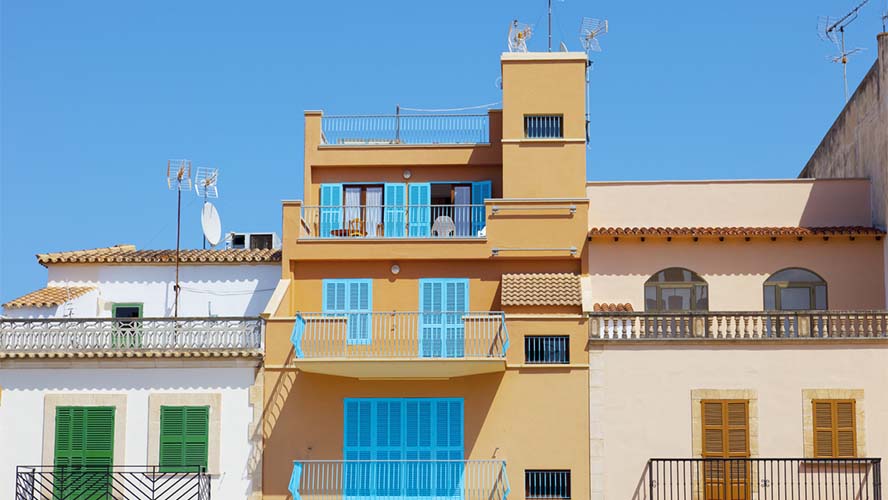
Survival through social initiatives
Many people have seen Lavapiés as a genuine, accidental inter-ethnic experiment carried out over several decades, the results of which are a testament to harmonious coexistence. This cultural balance, however, is the result of concerted efforts to achieve social cohesion, mostly by neighbourhood associations, social action groups and cultural initiatives. The evidence of this can been seen today in the wide network of cultural venues in the barrio, many of which work “camouflaged” from the tourists, behind the traditional façades of former factories and converted business premises.
La Tabacalera (Calle de Embajadores, 51) is the best example. The building (once the Royal Spirits and Playing Cards Factory, and then later the Tobacco and Snuff Factory) is nowadays a social and cultural centre where activities range from workshops and exhibitions to concerts and markets of all kinds.
Bars everywhere on the ‘costa’ de Argumosa
The last great pillars of Lavapiés are its bars, and we can find twenty-five of them in Calle Argumosa alone. The wide, tree-lined pavements of this famous street links Lavapiés with the Ronda de Atocha, and gets its name from the renowned Spanish surgeon Diego de Argumosa. It has wide pavements and terraces everywhere you look. There are so many awnings that some have even dared to give the street the nickname la playa de Lavapiés [Lavapiés beach].




































































